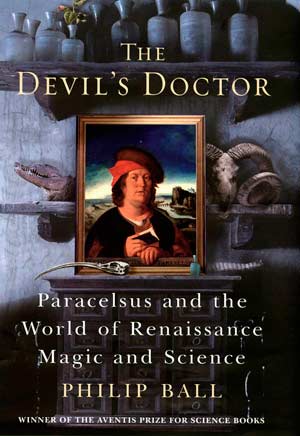 The Devil’s Doctor: Paracelsus and the World of Renaissance Magic and Science by Philip Ball
The Devil’s Doctor: Paracelsus and the World of Renaissance Magic and Science by Philip Ball
‘Philip Theophrastus Aureolus Bombast von Hohenheim – known to later ages as Paracelsus – stands on the borderline between medieval and modern: a name that is familiar but a man who has been hard to perceive or to understand. A contemporary of Martin Luther, he was an enemy of established medicine, scourge of the universities (‘at all the German schools’, he said, ‘you cannot learn as much as at the Frankfurt fair’), army surgeon, unorthodox theologian, and alchemist. Myths about him – from his treating disease from beyond the grave in nineteenth-century Salzburg to his alleged Faustian bargain with the devil – have proved far more lasting than his real story. Even during his lifetime, he was rumoured to ride a magical white horse and to store the elixir of life in the pommel of his sword.
BUY ON AMAZON
But who was Paracelsus, and what did he truly believe and practise? He has been seen both as a charlatan and as a founder of modern science, but this book reveals a more complex man – who used his eyes and experience to learn from nature how to heal, and who wrote influential books on medicine, surgery and alchemy while living a drunken, combative, vagabond life.
Above all, he was a product of his time – an age of great change in which Christendom was divided, the classics were rediscovered and the earth was displaced from the centre of the cosmos – and whose bringing together of the seemingly diverse disciplines of alchemy and biology signalled the beginning of the age of rationalism.
Heinemann/Farrar, Straus & Giroux (2006) ISBN 0-434-01134-7[6]
